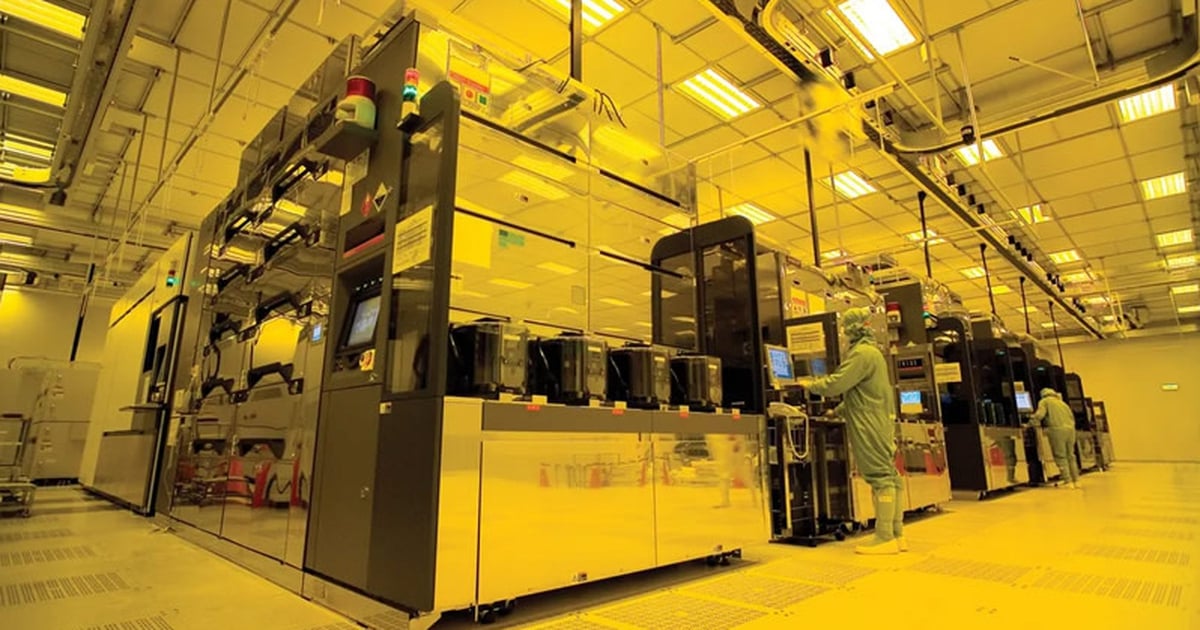According to Chinadaily , Chinese chipmakers are stepping up efforts to produce "mature" chips to prepare for an expected recovery of the global semiconductor industry this year.
Industry experts say Beijing's other goal is to reduce its dependence on imported chips amid US export controls.

Inside a chip production line at a factory in Chizhou city, Anhui province, China. (Photo: Reuters)
Much of China’s new manufacturing capacity will be focused on “mature” chips, typically 28 nanometers and above. While these aren’t the current leading-edge chips, they are widely used in a wide range of common applications, from home appliances to electric vehicles, experts say.
China's imports of integrated circuits (ICs or chips) fell in 2023 while domestic production capacity increased, latest customs data showed.
Last year, China imported 479.5 billion chips worth $349.4 billion, down 11% in volume and 15% in value from 2022.
In contrast, China's chip manufacturing capacity could increase by 12% to 7.6 million wafers per month in 2023, according to a report by global chip consultancy SEMI.
A wafer is a piece of silicon about 30 mil (0.76 mm) thick cut from a cylindrical silicon rod. It is used as a substrate material for the manufacture of integrated circuits.
"The sharp decline in China's chip imports is mainly due to weakening global market demand," said Sheng Linghai, an analyst at market consultancy Gartner.
Amid global geopolitical uncertainties, Chinese chipmakers are ramping up domestic production capacity, not only to meet soaring domestic demand for "mature" chips, but also to accumulate technology to gradually move towards advanced chip manufacturing, industry experts said.
Guo Junli, research director at IDC Asia-Pacific, said China urgently needs to improve its semiconductor supply capacity due to “huge” domestic demand, mainly from areas such as electric vehicles, industrial manufacturing and artificial intelligence.
“China is facing international policy risks and restrictions, so it urgently needs a supply chain that is not affected by these pressures,” Mr. Guo said.
SEMI predicts that this year, Chinese chipmakers will put 18 projects into operation and are expected to lead the expansion of the global semiconductor industry.
After reviewing the plans of 48 Chinese chipmakers, analysts at British bank Barclays said China could expand its chip manufacturing capacity by 60% in the next three years.
“Local manufacturers are still undervalued. There are actually more domestic chipmakers and fabs in China than what industry sources have acknowledged,” said analysts Joseph Zhou and Simon Coles at Barclays.
China has 44 wafer fabs in operation and another 22 under construction, and by the end of this year, there could be 32 new Chinese fabs producing “mature” chips, according to a recent report from Trend-Force, a microchip research firm.
China’s expansion of chipmaking capacity has raised concerns in the United States and the European Union. TrendForce forecasts that the move will push China’s global share of “mature” chipmaking capacity to 39% by 2027, up from 31% in 2023, with room for further growth if equipment purchases go smoothly.
Hua Yu (Source: Chinadaily)
Source







![[Photo] Ministry of Defense sees off relief forces to the airport to Myanmar for mission](https://vstatic.vietnam.vn/vietnam/resource/IMAGE/2025/3/30/245629fab9d644fd909ecd67f1749123)
























![[Photo] Prime Minister Pham Minh Chinh chairs meeting to remove difficulties for projects](https://vstatic.vietnam.vn/vietnam/resource/IMAGE/2025/3/30/7d354a396d4e4699adc2ccc0d44fbd4f)
































































![[REVIEW OCOP] An Lanh Huong Vet Yen Cat](https://vstatic.vietnam.vn/vietnam/resource/IMAGE/2025/3/27/c25032328e9a47be9991d5be7c0cad8c)


Comment (0)